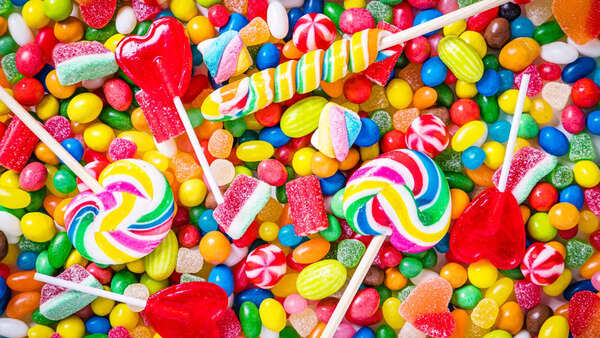Many store-bought foods contain hidden ingredients that pose significant health risks. It's crucial to be aware of these potential dangers that go beyond the nutrition facts on the packaging.

Food dyes are prevalent in numerous products, from candies to flavored rice. While these synthetic colors enhance the visual appeal of food, they may come at a significant cost to your health. Artificial food dyes such as Red 40 and Yellow 5 have been linked to neurobehavioral issues, especially in children, potentially leading to increased hyperactivity. The FDA has previously banned Red No. 3 due to its association with cancer.
Titanium dioxide is a chemical used to whiten foods like coffee creamers, candies, sunscreen, and toothpaste, enhancing their appearance. However, the FDA classifies this chemical as a Group 2B carcinogen. The nanoparticles in titanium dioxide may lead to inflammation and oxidative stress.

Brominated vegetable oil (BVO) is an emulsifier used to stabilize citrus-flavored drinks, preventing flavor oil from separating. Studies suggest links between BVO and neurological problems, thyroid dysfunction, and heart and liver damage. Despite being banned in Europe and the US, BVO remains in use in several other countries.

Potassium bromate is a flour additive used in bread making to strengthen dough. The World Health Organization classifies it as a possible human carcinogen. This ingredient is banned in Europe, Canada, and other regions due to its association with kidney and thyroid tumors in animals, as well as its nephrotoxic effects in both animals and humans.

High fructose corn syrup (HFCS) is a sweetener widely used in sodas and snacks. It is a significant contributor to obesity and diabetes. Research indicates that HFCS intake disrupts metabolism, increasing fat storage and insulin resistance. It is a common ingredient found in sugary beverages and processed foods.
Newer articles
Older articles
 Samsung Galaxy A35 5G and A55 5G: Full Pricing and Specs Revealed
Samsung Galaxy A35 5G and A55 5G: Full Pricing and Specs Revealed
 Warning Signs: 5 Clues Your Body May Be Signaling Prediabetes
Warning Signs: 5 Clues Your Body May Be Signaling Prediabetes
 Expert Tips to Help Kids Sharpen Focus and Combat Distractions
Expert Tips to Help Kids Sharpen Focus and Combat Distractions
 SA20 Teams Allowed Up to Six Player Retentions, Enhanced by New RTM Card and Increased Salary Cap for Upcoming Auction
SA20 Teams Allowed Up to Six Player Retentions, Enhanced by New RTM Card and Increased Salary Cap for Upcoming Auction
 Brain's Eye View: Study Shows We See the World 15 Seconds in the Past
OR
The 15-Second Delay: How Your Brain Creates a Seamless, But Delayed, Reality
Brain's Eye View: Study Shows We See the World 15 Seconds in the Past
OR
The 15-Second Delay: How Your Brain Creates a Seamless, But Delayed, Reality
 Cervical Cancer: Don't Ignore These 5 Subtle Warning Signs
Cervical Cancer: Don't Ignore These 5 Subtle Warning Signs
 Science-Backed: 5 Simple Daily Habits for a Healthier Heart
Science-Backed: 5 Simple Daily Habits for a Healthier Heart
 Shimron Hetmyer's Last-Gasp Six Stuns MI New York, Orcas Complete Record MLC Chase
Shimron Hetmyer's Last-Gasp Six Stuns MI New York, Orcas Complete Record MLC Chase
 Oral Cancer: Spotting the Signs, Understanding the Risks, and Why Early Detection is Critical
Oral Cancer: Spotting the Signs, Understanding the Risks, and Why Early Detection is Critical
 Infrequent Bowel Movements: When Is It Time to Worry? A Guide to Healthy Digestion
Infrequent Bowel Movements: When Is It Time to Worry? A Guide to Healthy Digestion